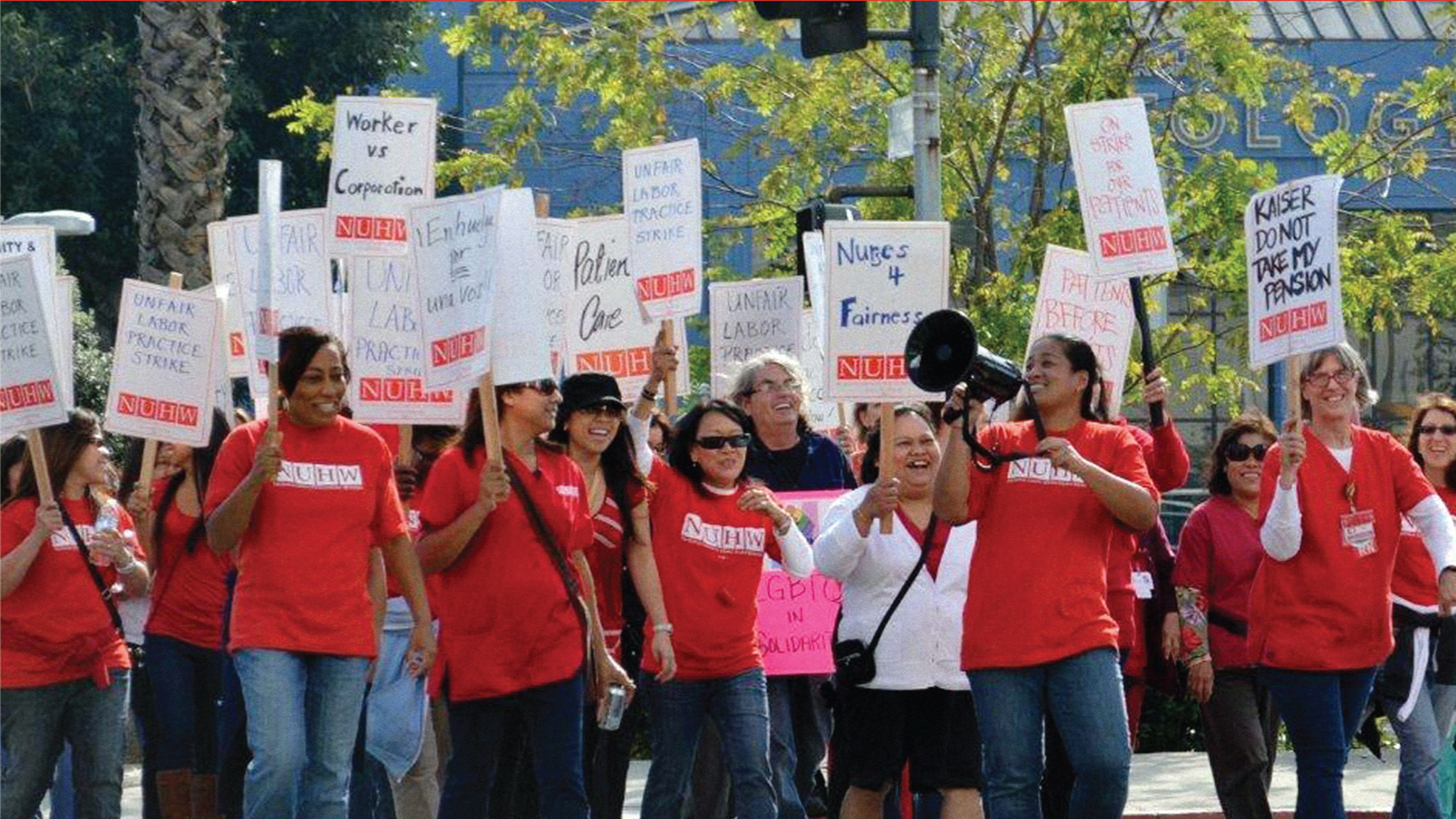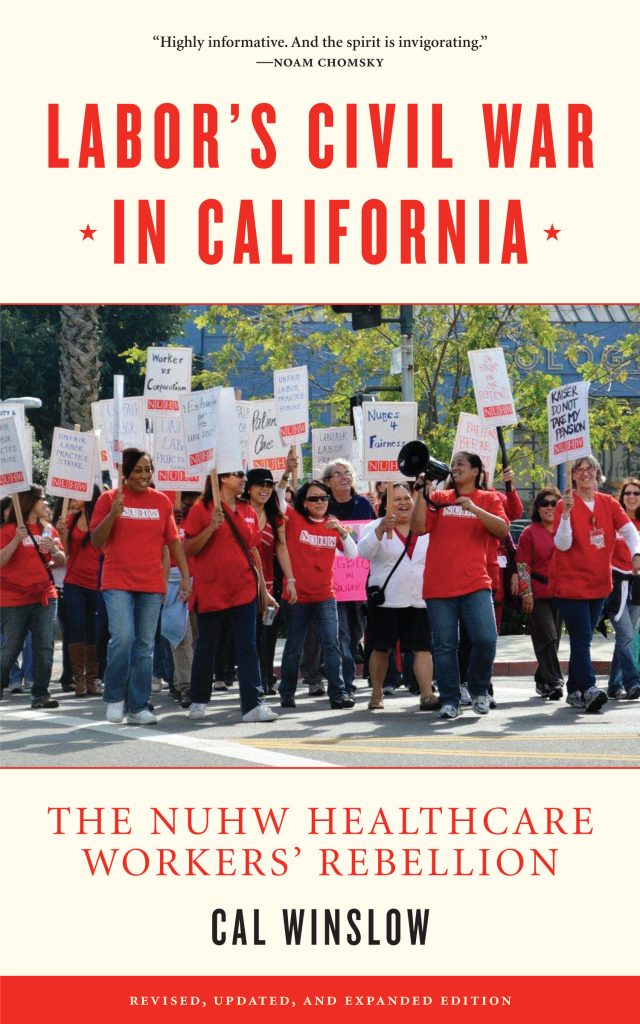by Carl Finamore
Talking Union
July 2, 2012
PM press just reissued Cal Winslow’s 2010 popular, sold-out edition of Labor’s Civil War in California with a new Preface, Introduction and Afterword. The heart of the book remains the same, telling a compelling story of a local membership insurgency with virtually no resources pitted against an international union’s extremely powerful apparatus with virtually no principles.
We
are referring to 150,000 healthcare workers in California who Winslow
states had their union wrecked by the bureaucratic, heavy-handed
intervention of the Service Employees International Union (SEIU) in
early 2009. The author further describes how the local union’s
100-member executive board of SEIU-UHW was dissolved, officers fired and
stewards replaced if they failed to sign loyalty oaths to interlopers
sent in by the Washington DC office of SEIU.
Essentially, Winslow
reports, the local leadership was kicked out for resisting the
international taking over their local bargaining, for opposing
unilateral removal of 65,000 of their homecare workers from the local
without a vote and for objecting to the international’s unprincipled
concessionary agreements with homecare and hospital management in
exchange for illusory organizing leverage.
In most cases, these odds overwhelm any hopes of a democratic opposition. In this case, however, virtually all the officers and executive board, along with hundreds of stewards and member activists, decided to fight.
Winslow explains how the large size of the local and its shift in the 1990s to more membership inclusion in the executive board, more education of issues confronting healthcare workers and more elected steward council control at the worksite accounts for the swell of discontent surging into a tidal wave of opposition.
This time, anger and frustration did not evaporate, it condensed into actual organization.
In fact, over seven hundred members assembled only a few short months after the January 2009 takeover of SEIU-UHW to actually form a new union, the National Union of Healthcare Workers (NUHW).
Readers will discover the scope of the rebellion is really quite unprecedented. That, in itself, should be of great interest to those who have found themselves at one time or another shoved into a corner where there was no alternative but to surrender or fight.
But there is really much more in the new edition that makes it worth keeping handy when friends get a little discouraged about “fighting the power.”
You see, the new edition tells the amazing story of how the insurgency has actually gained new support in the two years since the author’s first edition. Most uphill battles end in defeat and discouragement. That is the harsh reality, nature and consequences of struggle against powerful, entrenched opponents.
But NUHW is growing. It is up to around 10,000 members. This has been largely accomplished, Winslow believes, by NUHW involving rank and file members in running the union, by conducting successful strikes and by winning contracts that topped SEIU’s bend-over concessionary agreements. It can also be added that NUHW will certainly expand its capacities through its recent partnership with the International Association of Machinists & Aerospace Workers of America (IAM), AFL-CIO.
Thus, Labor’s Civil War in California is not just about healthcare workers, not just about California, and not just about the tragic decline of the SEIU international leadership. Its underlying appeal is the story of rank and file protests that beat all the odds and successfully evolved into a full-fledged organization that is continuing the proud, militant legacy of SEIU-UHW before it was tamed by SEIU handlers.
Through it all, NUHW reenergized organizing, recommitted to no-concession bargaining and rebuilt community coalitions to champion common interests of healthcare reform.
Winslow reminds us that “the strength of workers is in their hearts and hands and heads, in their numbers, in their organization at the workplace, in the democracy and power of the real unions that they build and in the solidarity of all workers.”
The writer purposely ends the new edition with these words that readers will surely grasp as an appeal for more rank and file activism in these times of unbridled corporate power and economic hardship. Thus, the second edition tells a story that needs to be told and that even more urgently needs to be duplicated.
Carl Finamore is Machinist Lodge 1781 former president (ret) and current delegate, San Francisco Labor Council, AFL-CIO. He was also a proud NUHW organizer during the 2010 Kaiser campaign. He can be reached at [email protected] and his writings viewed on http://carlfinamore.wordpress.com/







